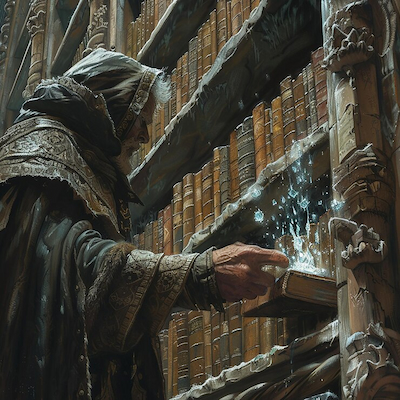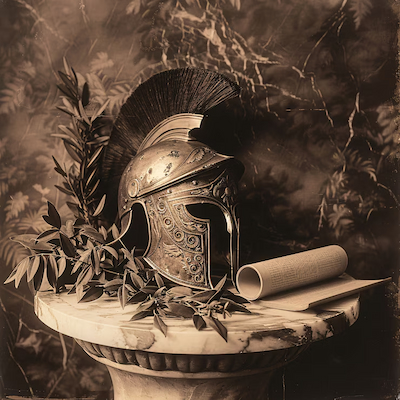
The construction of the hero in classical literature is a theme that has fascinated readers and scholars for centuries. From the epic tales of ancient Greece to contemporary narratives, the figure of the hero has remained a constant presence in the stories told throughout human history. The hero, with their virtues, flaws, and epic journeys, reflects the values and cultural aspirations of each era, serving as a mirror for the society that creates them. This construction goes beyond plot; it involves a complex web of archetypes, symbolism, and universal themes that resonate deeply with the human experience.
The modern influence of this heroic construction is equally significant. Today, the figure of the hero is no longer confined to traditional molds; it has expanded to include a diversity of voices and experiences. What was once a rigid standard is now a rich tapestry of narratives exploring issues of identity, morality, and resistance. This evolution reflects the shifts in contemporary societies and the quest for more authentic and inclusive representations in literature and the arts.
How Hero Archetypes Work in Classical Literature
Hero archetypes in classical literature function as narrative patterns that help shape the protagonist’s journey. One of the most recognizable archetypes is the “reluctant hero,” who hesitates to accept their mission but eventually embarks on a transformative journey. This pattern is evident in works like The Odyssey, where Odysseus faces immense challenges and, along the way, discovers not only the world around him but also profound aspects of his own identity. The hero’s reluctance often serves to heighten narrative tension and allows the audience to connect emotionally with the journey.
Another significant archetype is the “mentor,” who provides guidance and support to the hero. In classical literature, figures like Merlin in The Legend of King Arthur play a crucial role in guiding heroes along their paths. The mentor not only imparts knowledge and skills but also represents accumulated wisdom. This mentor-hero relationship is essential for the protagonist’s development and for the transmission of cultural and moral values fundamental to the story.
In addition, the figure of the “villain” is a critical component in the construction of the hero. The antagonist challenges the hero, placing them in situations of conflict that demand courage and resilience. These confrontations not only test the hero’s capabilities but also reveal their weaknesses and vulnerabilities, creating a richer and more complex narrative. The villain, therefore, is not merely an obstacle but an integral part of the hero’s journey, contributing to their growth and development.
Finally, the hero’s journey is often marked by a series of stages or “trials.” These trials are crucial for the hero’s transformation and may include physical, emotional, or moral challenges. Overcoming these trials leads the hero to their ultimate achievement, whether it be the fulfillment of a goal or the discovery of an inner truth. The structure of the hero’s journey, as proposed by Joseph Campbell in The Hero with a Thousand Faces, shows that these stages are universal and appear in myths and stories across the world, reinforcing the idea that the experience of heroism is an intrinsic part of the human condition.

Advantages of Understanding the Construction of the Hero in Classical Literature
Understanding the construction of the hero in classical literature offers several advantages for both readers and writers. It allows for a deeper appreciation of literary works. By recognizing the archetypes and narrative structures that shape the hero’s journey, readers can identify underlying themes and messages that may not be immediately apparent. This enriches the reading experience and provides new insight into the challenges and triumphs faced by the characters.
Furthermore, understanding the construction of the hero can inspire writers to create more complex and authentic characters. By exploring the archetypes and journeys that shape classical heroes, authors can develop protagonists who not only face challenges but also reflect the diversity of human experience. This is especially important in a world where marginalized voices are gaining more space in literature. The hero’s construction can be a powerful tool for exploring issues of identity, culture, and resistance.
Another advantage is the ability to connect emotionally with the audience. Stories that incorporate elements of the hero’s journey tend to resonate more deeply with readers, as they relate to the struggles and victories of the characters. This identification creates an emotional bond that can lead to greater empathy and understanding across different cultures and experiences. Literature, therefore, becomes a vehicle for building bridges between people, promoting inclusion and diversity.
Lastly, understanding the construction of the hero can serve as a tool for self-reflection and personal growth. By following the hero’s journey, readers are invited to reflect on their own lives and challenges. The trials the hero faces can mirror the difficulties we all encounter on our personal journeys, leading to a greater understanding of ourselves and others. This connection between literature and real life is what makes the construction of the hero so powerful and relevant, even in modern times.
How to Explore the Hero’s Journey in Your Own Stories
Exploring the hero’s journey in your own stories can be an enriching and transformative experience. To begin, it’s essential to identify the fundamental elements of the hero’s journey. These include classic stages such as the call to adventure, the refusal of the call, the journey, and the return. By mapping these elements, you can create a strong structure for your narrative that resonates with the audience.
Next, create heroic characters with depth. A well-developed hero should have their own flaws, motivations, and growth arcs. By giving your hero a rich and complex backstory, you make the narrative more engaging and allow readers to connect emotionally with the character. Characters who face moral dilemmas or struggle with their own limitations tend to be more memorable and impactful.
Use mythology and literature as inspiration. The hero’s journey is a concept that transcends cultures and eras, and you can find many examples in myths, legends, and classical stories. Studying these narratives can provide valuable insights into how to structure your own story and how to incorporate universal elements that resonate with the audience. This can help you avoid clichés and craft a more original and authentic narrative.
Develop heroic themes in your story. Topics such as courage, sacrifice, friendship, and redemption are powerful themes that can enrich your narrative. By exploring these themes, you can create a story that not only entertains but also provokes reflection and discussion. This is especially important in a world where stories have the power to influence perception and understanding of social and cultural issues.
Show the hero’s evolution throughout the story. The hero’s journey is a path of transformation, and it is crucial to highlight how your character changes and grows throughout the narrative. This evolution may result from experiences, lessons learned, and challenges faced. By showing this growth journey, you make the story more dynamic and provide readers with a sense of fulfillment as they witness the hero overcome obstacles.
Finally, connect with the audience through heroism. Stories that resonate with readers are those that reflect their own experiences and emotions. By creating a hero who faces universal challenges, you can establish an emotional connection that transcends cultural and temporal barriers. This not only makes your story more impactful but also allows readers to see themselves in the hero’s journey, creating a more meaningful reading experience.

Did You Enjoy Learning About the Hero’s Journey?
The hero’s path continues to inspire stories across time. If this topic sparked your curiosity, keep exploring how classic tales shape the narratives we love today.
Frequently Asked Questions
What is the construction of the hero in classical literature?
The construction of the hero in classical literature is like a blueprint. The hero faces challenges, makes choices, and grows throughout their journey.
How has the construction of the hero influenced modern literature?
The construction of the hero in classical literature and its modern influence forms the basis for many books and films. Think of characters like Harry Potter or Frodo, who follow this model!
What are the main elements of the hero’s journey?
The key elements include the call to adventure, trials, allies, and the return home. These steps transform the hero.

